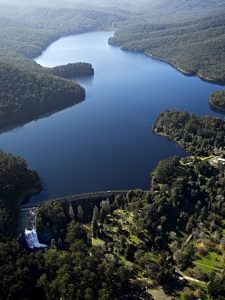Using Source for water and catchment management in the Australian Capital Territory
Source models support strategic planning, policy development, catchment and water resource management in the Australian Capital Territory
The models underpin the Australian Capital Territory (ACT) Water Strategy 2014-44 – Striking the Balance and support the ACT Government to meet its obligations under the Murray-Darling Basin Plan 2012.
Together with eWater, the ACT Environment, Planning and Sustainable Development Directorate (the Directorate) have embarked on a series of initiatives to upgrade the ACT’s Source models.

(credit: Danswell Starrs, ACT Environment, Planning and Sustainable Development Directorate)
Audit of water models
The Directorate use several different Source models to inform strategic planning and decision-making regarding land use planning, urban development and climate change on water quantity and quality and the operation and maintenance of water infrastructure.
eWater was engaged to audit the Directorate’s existing Source models to ensure they were fit-for-purpose and could address emerging needs, including the ability to:
- explore different policy, planning and management actions and assess potential impacts on the natural environment and water resources
- predict impacts of land development decisions on water resources and assess mitigate measures
- test new ways of operating water infrastructure
- predict future environmental states to inform policy and management decisions, such as environmental condition and future water supply/catchment yields.
The audit identified several issues with the existing models that limited their ability to meet the current and future needs of the ACT Government. eWater recommended a substantial rebuild of the models, including:
- Consolidating the existing nine models.
- Utilising human-readable input sets and data sets to run scenarios, rather than individual models.
- Reconfiguring storages and lakes in the catchment model to better represent how they operate.
- Reconceptualising and recalibrating the rainfall-runoff models.
- Incorporating the ACT water supply system.
- Establishing a current conditions baseline case for scenario assessment.
- Preparing and justifying a baseline scenario for the comparison of land use change scenarios.
Model rebuild
Following on from the audit, eWater was engaged to rebuild the ACT’s catchment and planning models.
eWater built two new Source models for the ACT, a catchment and a planning model. Model performance has been improved by reducing the number of sub-catchments outside of the ACT. The new models use LASCAM (Large-Scale Catchment Model) rainfall-runoff models, allowing for physically based assessments of hydrological impacts of land use change. The catchment model now incorporates Canberra’s water supply system, including storages. The consolidation of the models allows for different policy and management options to be implemented by Scenario Input Sets.
In addition to the model re-build, the project also included collaborating with the ACT Office of the Chief Digital Officer to the integrate Source models with the ACT Government Water Data Management System. This brings two main benefits, it streamlines the transfer of data and model outputs and adds dashboarding capabilities to improve the presentation of model outputs. Integrations was achieved through a customised plug-in, developed by the eWater Software Development Team.
eWater also provided customised training to Directorate staff, to ensure they understood the Source model and were able to support its future development and application.

(credit: Danswell Starrs, ACT Environment, Planning and Sustainable Development Directorate)
Implementation
The Directorate is using the models to inform a wide range of water and catchment management activities, including to:
- support investment in catchment remediation and
investment, by helping identify which areas will lead to the greatest
improvements in water quality and/or water yield - investigate Integrated Catchment Management
options across the ACT and the greater region - understand stormwater and flooding risks in
urban areas - forecast future water supply and demand
scenarios - compare likely outcomes from different water
efficiency initiatives - investigate alternative water supply options,
such as treated effluent, grey water and stormwater for consumptive and
non-consumptive uses - test different options to improve the management
of rivers and lakes, to promote recreational use and reduce risks to public
health.
Acknowledgements
This case study was prepared in collaboration with the ACT Environment, Planning and Sustainable Development Directorate.



